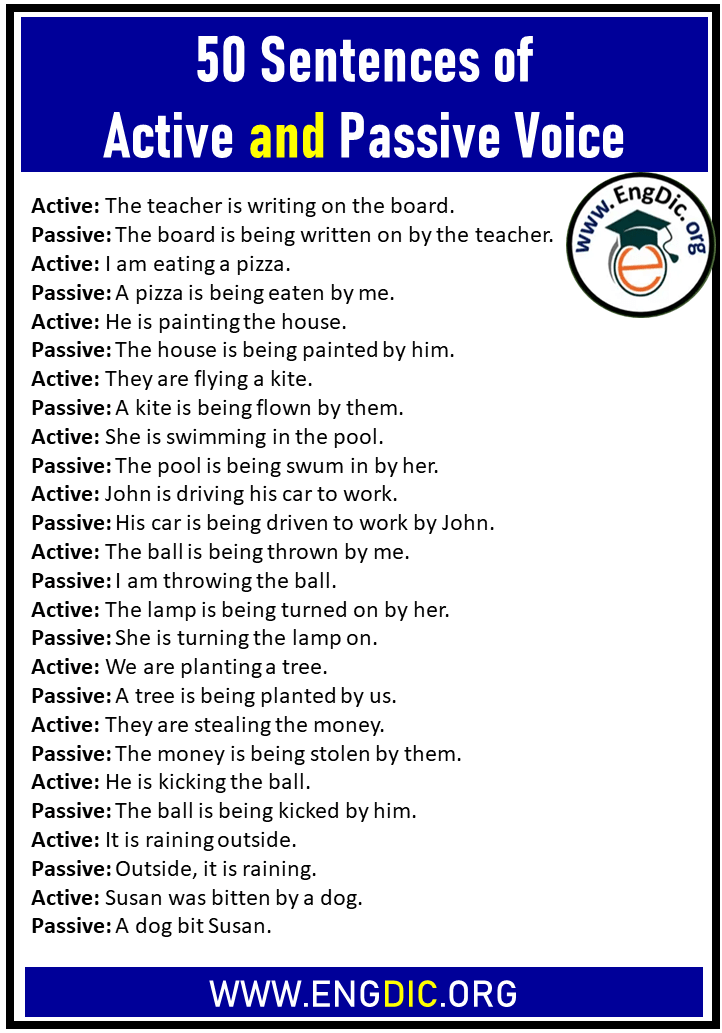Understanding the difference between active and passive voice sentences is essential in improving your writing skills. Active voice sentences are straightforward and direct, with the subject performing the action. On the other hand, passive voice sentences have the subject being acted upon, resulting in a less clear and concise sentence structure.
By learning how to convert active voice sentences to passive voice sentences, you can add variety to your writing and enhance the overall flow of your work. It is a valuable skill that can make your writing more engaging and dynamic.
Examples of Active to Passive Voice Sentences:
1. Active: The teacher assigned the homework to the students.
Passive: The homework was assigned to the students by the teacher.
2. Active: The company launched a new product last week.
Passive: A new product was launched by the company last week.
3. Active: The chef prepared a delicious meal for the guests.
Passive: A delicious meal was prepared for the guests by the chef.
4. Active: The police arrested the suspect yesterday.
Passive: The suspect was arrested by the police yesterday.
5. Active: The team won the championship last year.
Passive: The championship was won by the team last year.
As you can see from the examples above, converting active voice sentences to passive voice sentences involves changing the structure of the sentence and rearranging the words to emphasize the action rather than the subject. This shift can bring a different perspective to your writing and create a more engaging narrative for your readers.
Practice is key when it comes to mastering the skill of transforming active voice sentences to passive voice sentences. As you become more familiar with the process, you will be able to implement it seamlessly into your writing, making your work more polished and professional.
In conclusion, understanding how to convert active voice sentences to passive voice sentences is a valuable skill for any writer. By mastering this technique, you can enhance the clarity and effectiveness of your writing, creating a more engaging experience for your readers. So, practice, experiment, and see how this simple yet powerful change can elevate your writing to the next level.
